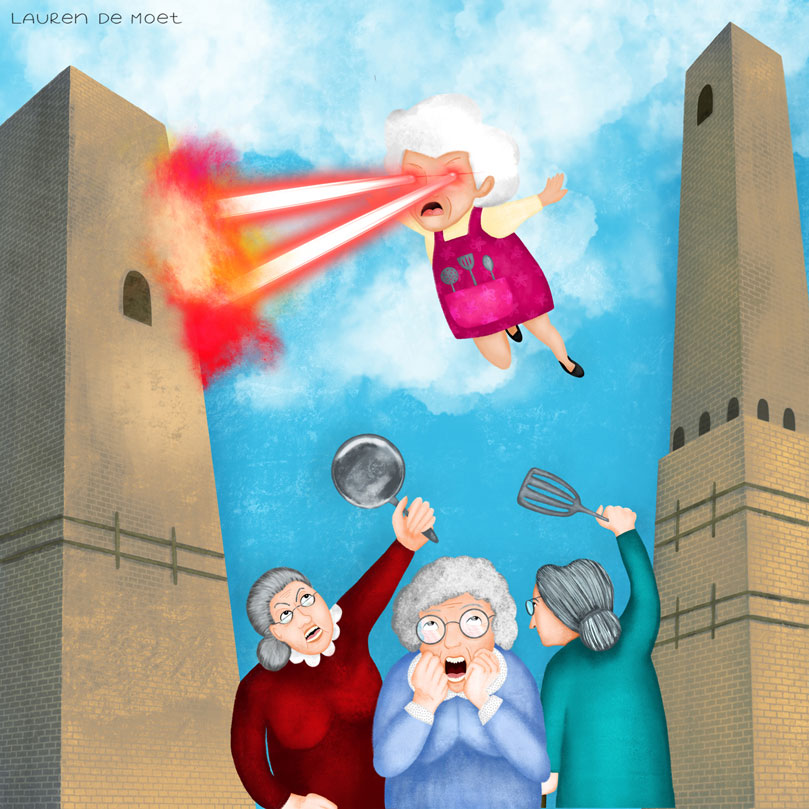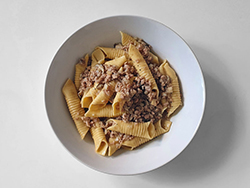
At first sight it would appear our journey is over. We’ve picked ourselves up from our spag bol faux pas and entered the light with a perfectly authentic tagliatelle al ragù alla bolognese. Pat yourself on the back, you’ve earned a score-draw against the Bolognans, in their own back-yard.
However, when it comes to the thorny subject of “authenticity”, there will always be a nagging doubt at the back of my mind. A centuries old recipe, which was only anointed in 1982, deserves a deeper exploration of its heritage. We can’t just accept that our ragù is “authentic” because Virginio Merola says so.
“When people are least sure, they are often the most dogmatic."
John Kenneth Galbraith
In our mission to uncover the truth, we will be putting the establishment under the microscope and questioning their final decision of what a bolognese should be. We will follow every spaghetti strand of evidence as we slurp through the past couple of centuries’ sughi.
Educating Italians about their own food is no doubt going to be met with resistance. Standing in our way are l’Accademia Italiana Della Cucina and an army of Northern Italian nonnas.
Time to dismantle them in order.
L’Accademia
Our first foe is the most deserving. While trying to replicate ragù alla bolognese I found myself increasingly questioning the competence of l’Accademia. I would love to have been a fly on the wall at the committee meeting when they decided to be fastidious about the carrots being yellow, but then hide the cartella di manzo - star of the dish - behind a cloak of confusion.
A specification should be specific. There were too many options, too much reading between the lines. All this ambiguity is a sad indictment of early 1980’s recipe instructions.
In 100 years Jamie Oliver will be best remembered as a TV chef, restaurateur and charitable do-gooder. Not to me.
To me, he will be best remembered for ratcheting up the quality of home cookery books. Jamie wouldn’t put his name to the incoherent recipe instructions served up by l’Accademia (although he probably would have put his name to the dish, calling it “Jamie’s Radical Ragù”, or similar 🙄).
I’m also a little offended by the arrogance of the establishment. Bolognese became a global phenomenon off the back of its association with spaghetti. Rather than Virginio Merola gracefully thanking the world for the millions of euros of tourist income this dish will have generated to pay his wages, he decides to go on the attack and criticise us all for being wrong.
But I reserve l’Accademia’s biggest misdemeanor until last. Those of you who know this story better than most may have been surprised to see the use of red wine in my interpretation.
Once more, that aged antagonist Mary Berry challenged our bolognese bias by not only adding cream to the sauce but also by using white wine. She was defended by the l’Accademia’s apologists and, at the time, the evidence clearly backed her side of the story.
You can find websites as young as a couple of years old that describe the classic 1982 recipe to the letter with the use of white wine instead of red.
The official recipe for ragù alla bolognese has been updated.
L’Accademia has tampered with evidence!
If this were a court of law, their case would have been thrown out and a miscarriage of justice declared. L’Accademia loses all credibility in their claims of what is right and what is wrong.
Nonnas
Nonnas represent the strongly held Italian belief that there is always a single, unalterable original for all the regional dishes that have been dreamt up and passed from generation to generation. As we will discover, this simply is not true.
Sidestepping the northern Italian nonna is a tougher task.
Italy is all about family, and the most protected member of the brood is always going to be grandmother - particularly when it comes to the preparation of food.
She’s an encyclopedia of home cooking and has been perfecting her craft for decades. There isn’t a local speciality she can’t rustle up, with one eye on the dish and the other on her gay grandson, as she questions him when he’s going to settle down and find a nice girl.
However, let’s not forget - like all old people, a good proportion of those Bolognan nonnas will be vile racists, so we can’t consider them all to be infallible.
So how to tackle the delicate issue of questioning the wisdom of nonna?
Well, you bring in her nonna. Then bring in her nonna, and keep going until you can open your mind and accept the all seeing meta-nonna who transcends time and space, and all the other dimensions in an Italian kitchen.
The meta-nonna knows that the recipes mutate.
White wine inexplicably gets replaced with red. People stop searching for yellow carrots and switch to orange. A roughly chopped cow’s diaphragm gets abstracted away to plain-old-beef-mince.
Food will evolve, and it’s likely that what we consider to be the “original” was only ever an incremental step along the way - it just happened to be the step that was adopted. Maybe one day someone will dedicate an article to the inspired genius who brought us Thai red curry Bolognese. Maybe not.
So let’s fly back in time with the meta-nonna and dissect the recorded history of ragù alla bolognese.
